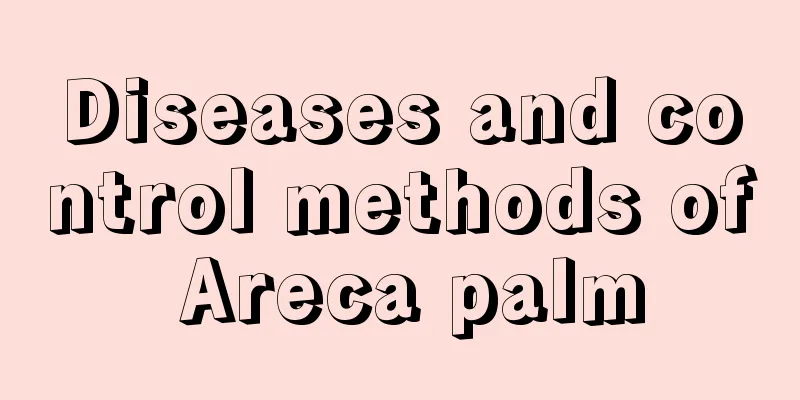Diseases and control methods of Areca palm

Areca palm leaf blightsymptomAreca palm leaf blight is a common disease caused by fungal infection, which has a great impact on the growth of Areca palm. In mild cases, the leaves will dry up, and in severe cases, the entire plant will die. Leaf blight first infects the leaf tips and edges. In the early stage of the disease, the infected areas appear as brown spots or strip-like patches. In the middle stage, the spots or patches gradually expand and connect with each other. In the late stage, the leaves appear gray and dry. WorkaroundStrengthen maintenance, ensure good ventilation and control air humidity. When the disease occurs, you can spray 800 times of 70% thiophanate-methyl solution or 1000 times of 75% thiophanate-methyl solution once every 7 to 10 days, and spray 3 to 4 times in succession to effectively control the disease. Anthracnose of Areca palmsymptomWhen anthracnose occurs in Areca palm, it starts to spread from the leaf edges and tips. Round or oval yellow-brown spots will appear on the leaves, with the diseased areas slightly raised and yellow edges. As the disease worsens, the spots will turn black and become dense black spots. WorkaroundStrengthen water and fertilizer management to enhance the disease resistance of plants. From the early stage of the disease, spray 800 times diluted 50% methyl thiophanate wettable powder plus 800 times diluted 75% thiophanate-methyl wettable powder to kill the disease. Areca palm leaf spotsymptomLeaf spot and leaf blight both affect leaves, but they have different symptoms. When leaf spot disease occurs, small yellow-brown spots appear on the leaves in the early stage of the disease, gradually expanding into streaks and may merge into irregular necrotic blocks. The leaf tips and edges are most susceptible to damage. When the disease is serious, more than half of the leaves will dry up and curl up, as if burned by fire. The center of the lesion is dark or grayish white, surrounded by dark lines on the edge, and in the later stage, small oval black spots are scattered on the diseased part. WorkaroundIn the early stage of the disease, spraying 300-500 times diluted 50% carbendazim wettable powder or 400-650 times diluted 70% mancozeb wettable powder once a week for several consecutive times can effectively prevent and control the disease. |
<<: Common diseases of plum blossom and their prevention and treatment
>>: Disease and Pest Control of Dripping Guanyin
Recommend
Maintenance method of baby's breath
Gypsophila paniculata , known for its rich colors...
Is the fortune tree still alive if its bark rots?
1. Can I still live? The bark rot of the money tr...
What should I do if my daughter grows taller?
What does it look like to have a female chick? Th...
Where is ginger suitable for planting?
Ginger growing area Ginger generally grows in the...
The causes and solutions of the excessive growth of the lotus
The reason why the lotus grows too long Insuffici...
How do the seeds of chicken feather vegetable come from?
How do the seeds of chicken feather vegetable com...
How to change the soil and pot of Kalanchoe
The role and requirements of changing soil and po...
Methods and steps for planting jade fan
Time to plant the jade fan In spring and autumn, ...
What flowers are suitable for growing in Zhengzhou? What are the city flowers and trees?
1. Climate characteristics of Zhengzhou Zhengzhou...
The difference between mountain rose and plumeria rose
1. Differences in plants: The base of mountain ro...
Can I grow wisteria at home?
Can I grow wisteria at home? Wisteria can be plan...
Cultivation methods and precautions of Staghorn Begonia
1. Breeding methods 1. Light: It prefers an envir...
How often should I water the coral?
How often should I water my coral? The coral reef...
What kind of anthurium is suitable for hydroponics
1. What kind of suitability General types are mor...
The breeding methods and precautions of Guanzhong
1. Matrix selection Guanzhong will grow well in s...









